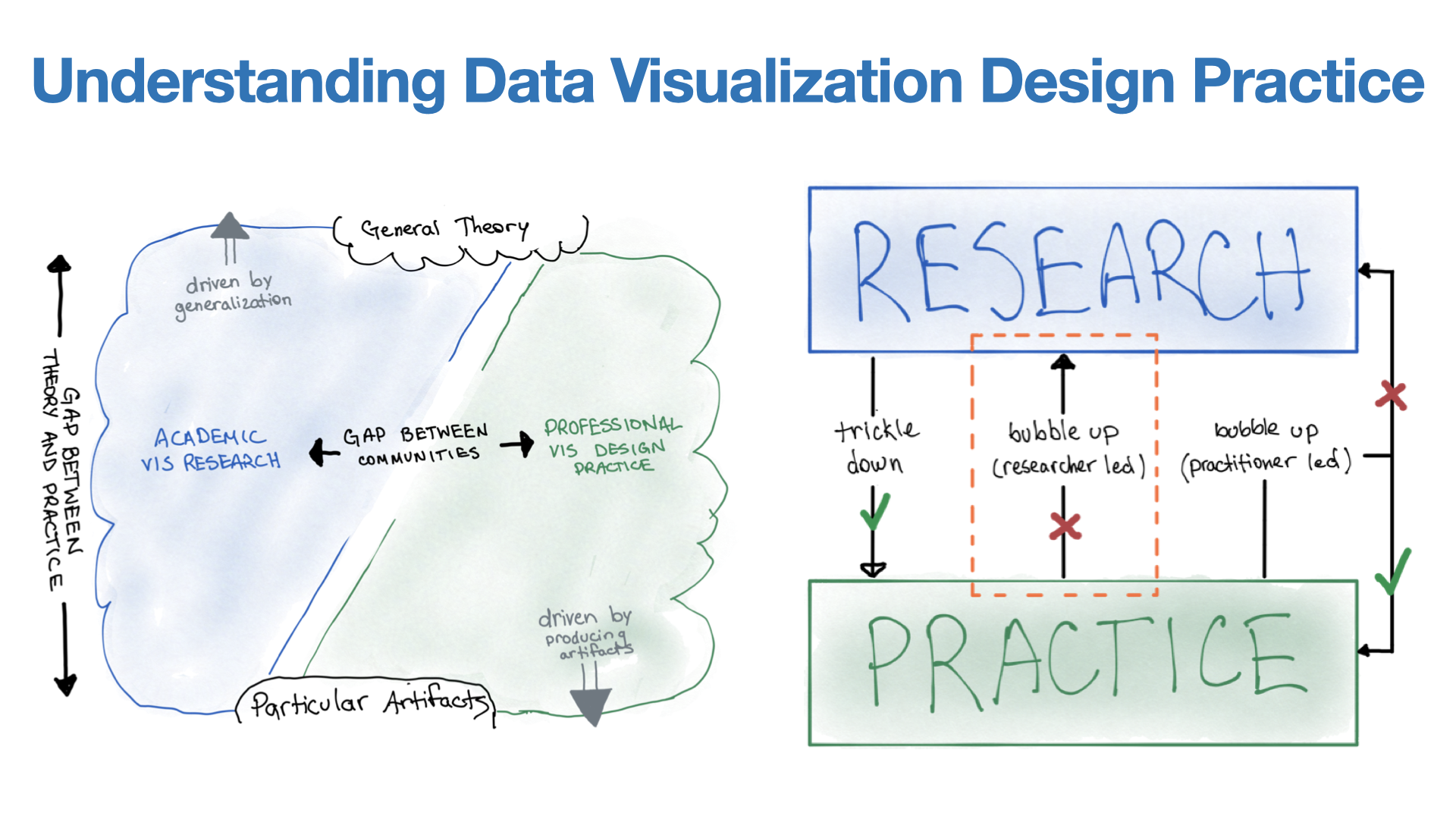Understanding Data Visualization Design Practice
Paul Parsons
External link (DOI)
View presentation:2021-10-28T13:45:00ZGMT-0600Change your timezone on the schedule page
2021-10-28T13:45:00Z

Abstract
Professional roles for data visualization designers are growing in popularity, and interest in relationships between the academic research and professional practice communities is gaining traction. However, despite the potential for knowledge sharing between these communities, we have little understanding of the ways in which practitioners design in real-world, professional settings. Inquiry in numerous design disciplines indicates that practitioners approach complex situations in ways that are fundamentally different from those of researchers. In this work, I take a practice-led approach to understanding design practice on its own terms. Twenty data visualization practitioners were interviewed and asked about their design process, including the steps they take, how they make decisions, and the methods they use. Findings suggest that practitioners do not follow highly systematic processes, but instead rely on situated forms of knowing and acting in which they draw from precedent and use methods and principles that are determined appropriate in the moment. These findings have implications for how visualization researchers understand and engage with practitioners, and how educators approach the training of future data visualization designers.